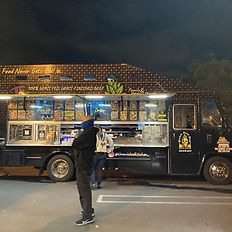How to Start a Food Truck in California: The Ultimate 2025 Guide
In California, it's important to understand the local food service regulations and obtain the necessary permits for operating a food truck. Networking with other food truck owners in California can provide valuable insights and opportunities for collaboration. Consider the weather and seasonal factors in California when planning the operation schedule and menu for the food truck.


Insurance Coverage for Food Trailers in California
Insurance Coverage for Food Trailers in California
In California, all trailers, including food trailers, must be registered under the Permanent Trailer Identification (PTI) program. To register, submit the completed PTI Application (Form REG 4017), proof of ownership, and pay the required fees.
The PTI program issues a permanent identification plate and an identification certificate for the trailer.
A service fee is charged every five years to maintain the record. Trailers used exclusively for farm purposes may be exempt from certain fees but still require registration. Ensure all documents are accurate to avoid delays in the registration process.
California law requires all vehicles, including trailers, to have liability insurance. The minimum coverage limits are $15,000 for injury/death to one person, $30,000 for injury/death to more than one person, and $5,000 for property damage.
It's essential to ensure that your insurance policy covers both the towing vehicle and the trailer. Consult with your insurance provider to confirm that your food trailer is adequately insured.
Summarized Business Regulations for Cottage Food Laws in California
In California, the Department of Public Health doesn't directly permit or register Cottage Food Operations (CFOs), but they oversee an approved list of foods allowed for CFOs. These operations can prepare and package specific low-risk foods in a private home kitchen, as listed in the Approved Cottage Food List. For inquiries or to apply for registration or permits for a CFO, individuals should reach out to their local Environmental Health Department.
Example of Successful Food Trucks in California

The Lime Truck Southern California
Mexican food

The Lobos Truck
American Comfort Food

Treat Day Truck
American food

How to Register and Title Your Food Truck in California [2025]
In California, all trailers, including food trailers, must be registered under the Permanent Trailer Identification (PTI) program. To register, submit the completed PTI Application (Form REG 4017), proof of ownership, and pay the required fees.
The PTI program issues a permanent identification plate and an identification certificate for the trailer.
A service fee is charged every five years to maintain the record. Trailers used exclusively for farm purposes may be exempt from certain fees but still require registration. Ensure all documents are accurate to avoid delays in the registration process.
Find a Food Truck for Sale in California

California Food Trailer Braking System Requirements
In California, trailers with a gross weight of 3,000 pounds or more are required to have brakes on at least one axle. These brakes must be capable of being applied by the driver of the towing vehicle.
Additionally, trailers must be equipped with a breakaway system that applies the brakes automatically if the trailer becomes detached from the towing vehicle. Ensuring your trailer's braking system meets these standards is crucial for safe operation.
Lighting, Reflectors, and Safety Chains Requirements for Food Trailers in California
California requires trailers to have specific lighting and reflector configurations: two red tail lights visible from 500 feet, amber reflectors on the sides, and functioning turn signals. Trailers must also be equipped with safety chains or cables to prevent separation from the towing vehicle in case of hitch failure. These chains should be crossed under the hitch and have sufficient strength to control the trailer's movement. Regularly inspect these components to ensure compliance and safety.

![Fast Track to Six-Figure Food Truck Profit in California [2025 Bundle with Guides, Calculators and Full Business Plan]](https://static.wixstatic.com/media/aec654_8c4b330106a74558a361c93b9ad6698d~mv2.jpg/v1/fill/w_562,h_375,al_c,q_80,usm_0.66_1.00_0.01,enc_avif,quality_auto/aec654_8c4b330106a74558a361c93b9ad6698d~mv2.jpg)












































































